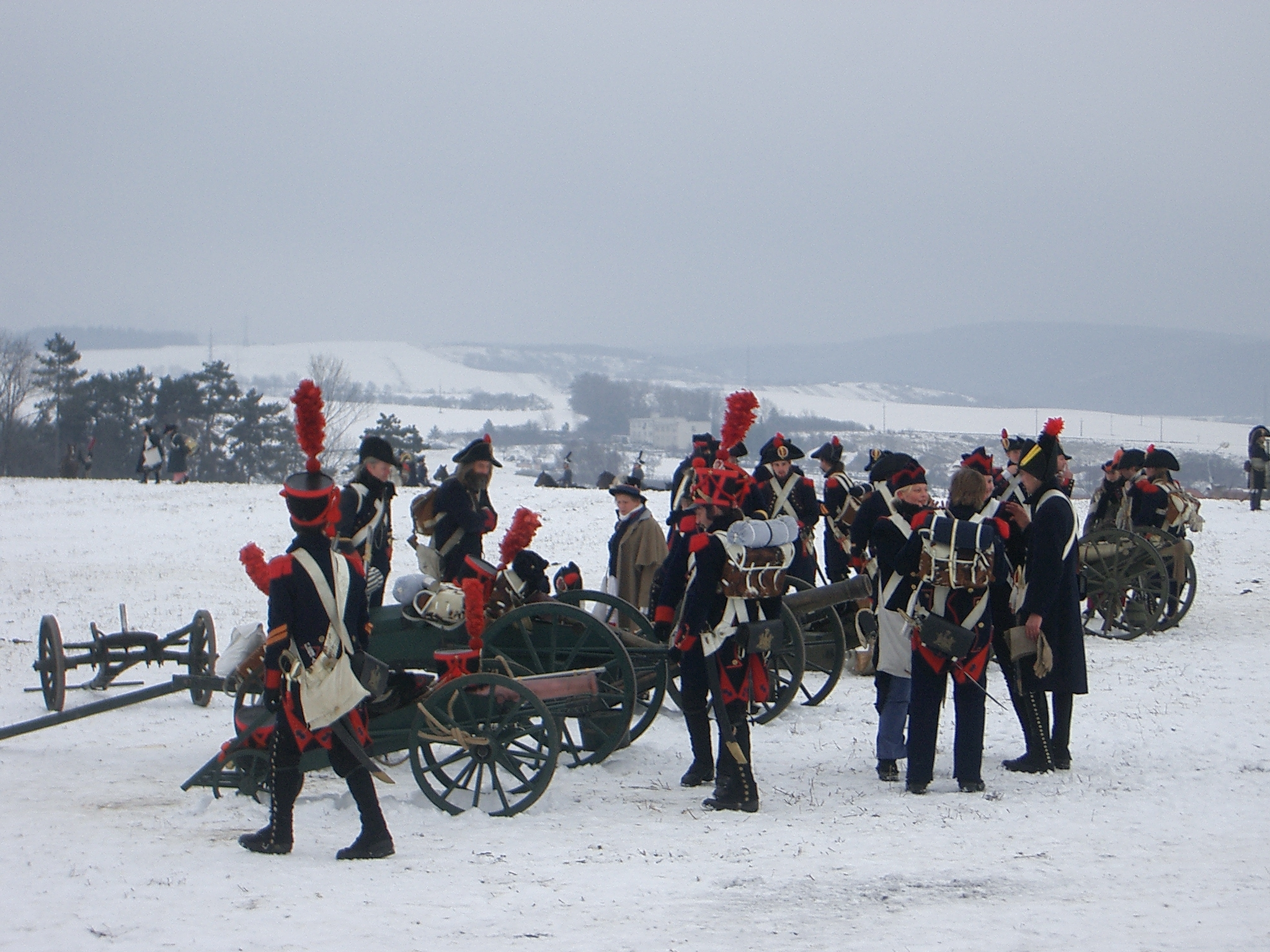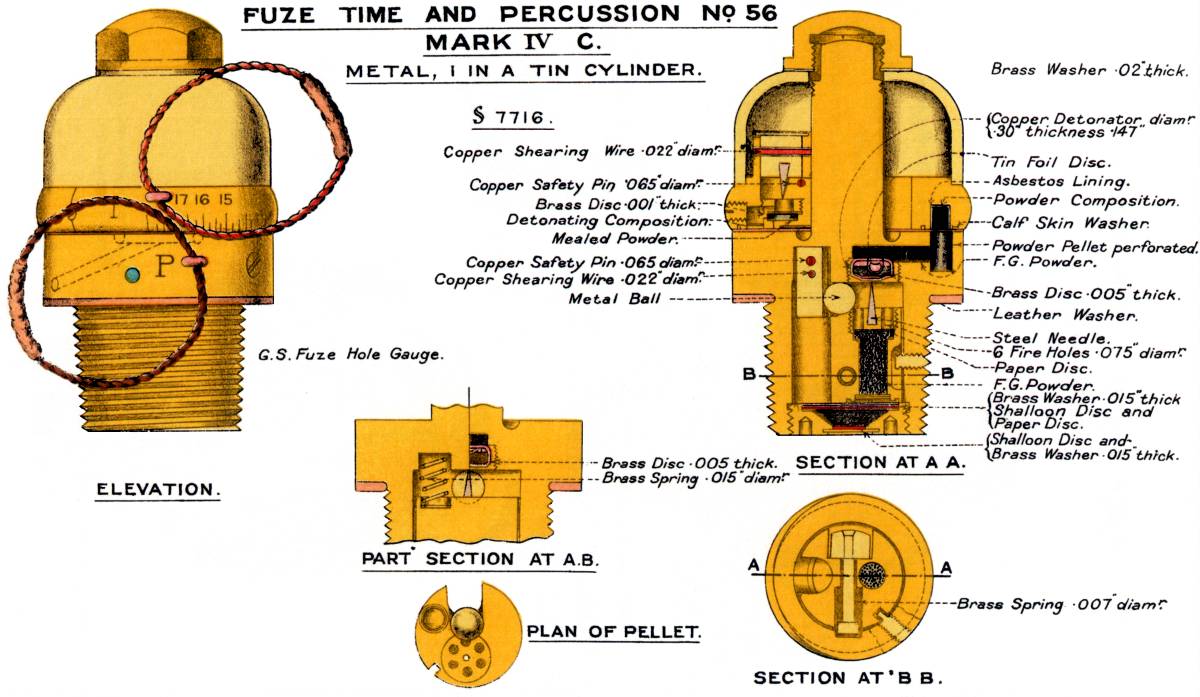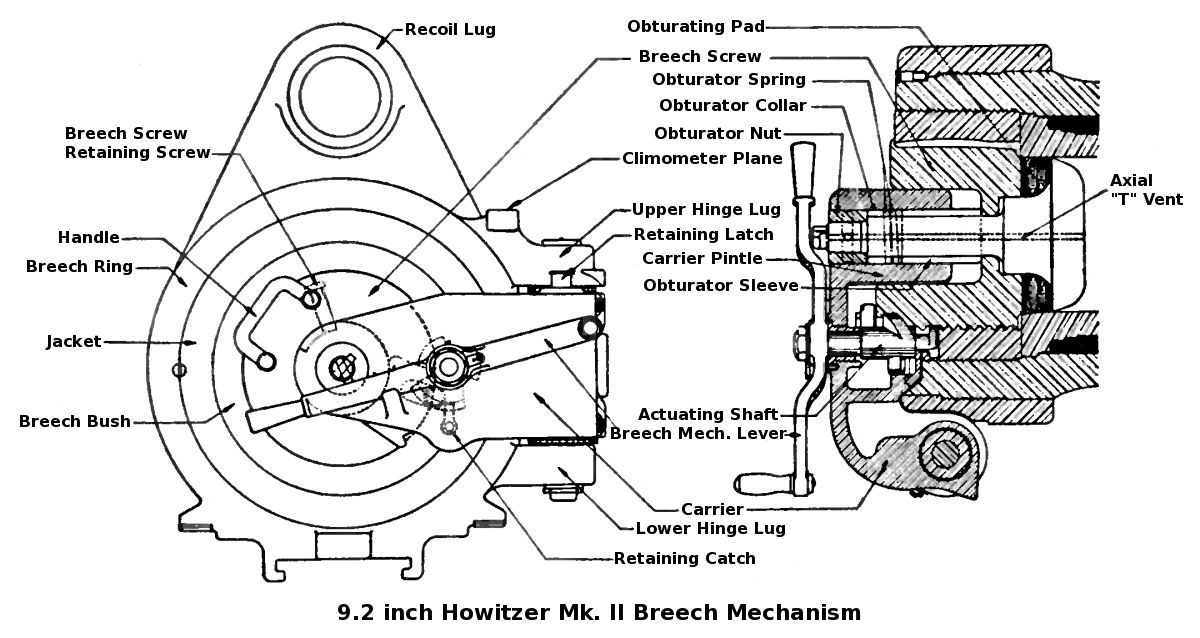|
Ordnance BL 12-pounder 7 Cwt
The Ordnance BL 12-pounder 7cwtBritish military traditionally denoted smaller ordnance by the weight of its standard projectile, in this case approximately . "7 cwt" referred to the weight of the gun and barrel to differentiate it from other "12-pounder" guns. 1 long hundredweight (cwt) = . was the British Army's field gun which succeeded the RML 13-pounder 8 cwt in 1885. History The gun was initially adopted by both the Royal Field Artillery and Royal Horse Artillery, and was in full service by 1885. It marked a return to breech-loading guns, after the British Army had reverted to muzzle-loaders in the late 1860s following the failure of the Armstrong screw breech guns. Problems arose when it was used by the Horse Artillery in the great Indian cavalry manoeuvres of 1891. The carriage was found to be too complicated and dust caused the metal surfaces of the axle traversing device to seize. It also proved too heavy to manoeuvre for horse artillery, which was intended to suppor ... [...More Info...] [...Related Items...] OR: [Wikipedia] [Google] [Baidu] |
Field Gun
A field gun is a field artillery piece. Originally the term referred to smaller guns that could accompany a field army on the march, that when in combat could be moved about the battlefield in response to changing circumstances ( field artillery), as opposed to guns installed in a fort (garrison artillery or coastal artillery), or to siege cannons and mortars which are too large to be moved quickly, and would be used only in a prolonged siege. Perhaps the most famous use of the field gun in terms of advanced tactics was Napoleon Bonaparte's use of very large wheels on the guns that allowed them to be moved quickly even during a battle. By moving the guns from point-to-point during a battle, enemy formations could be broken up to be handled by the infantry or cavalry wherever they were massing, dramatically increasing the overall effectiveness of the attack. World War I As the evolution of artillery continued, almost all guns of any size became capable of being moved at some ... [...More Info...] [...Related Items...] OR: [Wikipedia] [Google] [Baidu] |
Armstrong Gun
An Armstrong gun was a uniquely designed type of Rifled breech-loader, rifled breech-loading field and heavy gun designed by William George Armstrong, 1st Baron Armstrong, Sir William Armstrong and manufactured in England beginning in 1855 by the Elswick Ordnance Company and the Royal Arsenal at Woolwich. Such guns involved a built-up gun construction system of a wrought-iron (later of mild steel) tube surrounded by a number of wrought-iron strengthening coils shrunk over the inner tube to keep it under compression. The Armstrong rifled breechloading guns of the 1850s-1860s In 1854, Armstrong approached the Secretary of State for War, proposing that he construct a Rifled breech loader, rifled breech-loading 3-pounder gun for trial. Later increased in bore to 5-pounder, the design performed successfully with respect to both range and accuracy. Over the next three years he developed his system of construction and adapted it to guns of heavier calibre. Armstrong's system was adopted ... [...More Info...] [...Related Items...] OR: [Wikipedia] [Google] [Baidu] |
Artillery Of The United Kingdom
Artillery is a class of heavy military ranged weapons that launch munitions far beyond the range and power of infantry firearms. Early artillery development focused on the ability to breach defensive walls and fortifications during sieges, and led to heavy, fairly immobile siege engines. As technology improved, lighter, more mobile field artillery cannons developed for battlefield use. This development continues today; modern self-propelled artillery vehicles are highly mobile weapons of great versatility generally providing the largest share of an army's total firepower. Originally, the word "artillery" referred to any group of soldiers primarily armed with some form of manufactured weapon or armor. Since the introduction of gunpowder and cannon, "artillery" has largely meant cannons, and in contemporary usage, usually refers to shell-firing guns, howitzers, and mortars (collectively called ''barrel artillery'', ''cannon artillery'', ''gun artillery'', or - a layman term - ... [...More Info...] [...Related Items...] OR: [Wikipedia] [Google] [Baidu] |
List Of Field Guns ...
Field guns are one of two primary types of field artillery. Guns fire a heavy shell on a relatively level trajectory from a longer barrel, allowing for very high muzzle velocity and good range performance. Guns are most adequate for providing long range fire support and counter-battery fire. Towed field guns Self-propelled field guns Notes and references {{reflist Field gun A field gun is a field artillery piece. Originally the term referred to smaller guns that could accompany a field army on the march, that when in combat could be moved about the battlefield in response to changing circumstances ( field artill ... [...More Info...] [...Related Items...] OR: [Wikipedia] [Google] [Baidu] |
Field Artillery
Field artillery is a category of mobile artillery used to support armies in the field. These weapons are specialized for mobility, tactical proficiency, short range, long range, and extremely long range target engagement. Until the early 20th century, field artillery were also known as foot artillery, for while the guns were pulled by beasts of burden (often horses), the gun crews would usually march on foot, thus providing fire support mainly to the infantry. This was in contrast to horse artillery, whose emphasis on speed while supporting cavalry units necessitated lighter guns and crews riding on horseback. Whereas horse artillery has been superseded by self-propelled artillery, field artillery has survived to this day both in name and mission, albeit with motor vehicles towing the guns (this towed artillery arrangement is often called mobile artillery), carrying the crews and transporting the ammunition. Modern artillery has also advanced to rapidly deployable wheeled a ... [...More Info...] [...Related Items...] OR: [Wikipedia] [Google] [Baidu] |
Ordnance BL 15-pounder
The Ordnance BL 15-pounder, otherwise known as the 15-pounder 7 cwt, was the British Army's field gun in the Second Boer War and some remained in limited use in minor theatres of World War I. It fired a shell of 3-inch (76 mm) diameter with a maximum weight of , hence its name which differentiated it from its predecessor '12-pounder' 3-inch (76 mm) gun which fired shells weighing only .The British at that time traditionally identified smaller guns by the maximum weight of shell they could fire, arbitrarily rounded up or down. History The gun was a modified version of the previous BL 12-pounder 7 cwt gun of 1883. When the modern smokeless propellant cordite replaced gunpowder in 1892 it was decided that the 12-pounder was capable of firing a heavier shell up to . A shell was adopted and the gun was renamed a 15-pounder. Mk I carriage : recoil was controlled by drag-shoes. These were placed under the wheels, and were connected by chains and cables to the wheel hubs and the trail. ... [...More Info...] [...Related Items...] OR: [Wikipedia] [Google] [Baidu] |
Cordite
Cordite is a family of smokeless propellants developed and produced in the United Kingdom since 1889 to replace black powder as a military propellant. Like modern gunpowder, cordite is classified as a low explosive because of its slow burning rates and consequently low brisance. These produce a subsonic deflagration wave rather than the supersonic detonation wave produced by brisants, or high explosives. The hot gases produced by burning gunpowder or cordite generate sufficient pressure to propel a bullet or shell to its target, but not so quickly as to routinely destroy the barrel of the gun. Cordite was used initially in the .303 British, Mark I and II, standard rifle cartridge between 1891 and 1915; shortages of cordite in World War I led to the creation of the "Devil's Porridge" munitions factory (HM Factory, Gretna) on the English-Scottish border, which produced 800 tonnes of cordite per annum. The UK also imported some United States–developed smokeless powders for us ... [...More Info...] [...Related Items...] OR: [Wikipedia] [Google] [Baidu] |
Ordnance BL 12-pounder 6 Cwt
The Ordnance BL 12-pounder 6 cwtBritish military traditionally denoted smaller ordnance by the weight of its standard projectile, in this case approximately . "6 cwt" referred to the weight of the gun and barrel to differentiate it from other "12-pounder" guns. One hundredweight (cwt) is , so the total weight was was a lighter version of the British 12-pounder 7 cwt gun, used by the Royal Horse Artillery in the late 19th and early 20th centuries. History Problems arose when the standard BL 12-pounder 7 cwt gun was used in the great Indian cavalry manoeuvres of 1891. The carriage was found to be too complicated, and dust caused the metal surfaces of the axle traversing device to seize. It also proved too heavy for horse artillery, which was intended to support cavalry in battle, to manoeuvre. The 12-pounder 6 cwt gun was therefore developed in 1892, when the new more powerful cordite replaced gunpowder, as a lighter version of the BL 12-pounder 7 cwt gun. It had a barrel shor ... [...More Info...] [...Related Items...] OR: [Wikipedia] [Google] [Baidu] |
British Ordnance Terms
This article explains terms used for the British Armed Forces' ordnance (i.e.: weapons) and also ammunition. The terms may have slightly different meanings in the military of other countries. BD Between decks: applies to a naval gun mounting in which part of the rotating mass is below the deck, and part of it is above the deck. This allows for a lower profile of turret, meaning that turrets need not be superfiring (i.e. they can be mounted on the same deck and not obstruct each other at high angles of elevation.) BL The term BL, in its general sense, stood for breech loading, and contrasted with muzzle loading. The shell was loaded via the breech (i.e. the gunner's end of the barrel, which opened) followed by the propellant charge, and the breech mechanism was closed to seal the chamber. Breech loading, in its formal British ordnance sense, served to identify the gun as the type of rifled breechloading gun for which the powder charge was loaded in a silk or cloth bag and the br ... [...More Info...] [...Related Items...] OR: [Wikipedia] [Google] [Baidu] |
British Empire
The British Empire was composed of the dominions, colonies, protectorates, mandates, and other territories ruled or administered by the United Kingdom and its predecessor states. It began with the overseas possessions and trading posts established by England between the late 16th and early 18th centuries. At its height it was the largest empire in history and, for over a century, was the foremost global power. By 1913, the British Empire held sway over 412 million people, of the world population at the time, and by 1920, it covered , of the Earth's total land area. As a result, its constitutional, legal, linguistic, and cultural legacy is widespread. At the peak of its power, it was described as "the empire on which the sun never sets", as the Sun was always shining on at least one of its territories. During the Age of Discovery in the 15th and 16th centuries, Portugal and Spain pioneered European exploration of the globe, and in the process established large overse ... [...More Info...] [...Related Items...] OR: [Wikipedia] [Google] [Baidu] |
Breech-loading
A breechloader is a firearm in which the user loads the ammunition (cartridge or shell) via the rear (breech) end of its barrel, as opposed to a muzzleloader, which loads ammunition via the front ( muzzle). Modern firearms are generally breech-loading – except for replicas of vintage weapons. Early firearms before the mid-19th century were almost entirely muzzle-loading. Mortars and the Russian GP-25 grenade launcher are the only muzzleloaders remaining in frequent modern usage. However, referring to a weapon specifically as breech loading is mostly limited to single-shot or otherwise non-repeating firearms, such as double-barreled shotguns. Breech-loading provides the advantage of reduced reloading time, because it is far quicker to load the projectile and propellant into the chamber of a gun/cannon than to reach all the way over to the front end to load ammunition and then push them back down a long tube – especially when the projectile fits tightly and the tub ... [...More Info...] [...Related Items...] OR: [Wikipedia] [Google] [Baidu] |
Royal Horse Artillery
The Royal Horse Artillery (RHA) was formed in 1793 as a distinct arm of the Royal Regiment of Artillery (commonly termed Royal Artillery) to provide horse artillery support to the cavalry units of the British Army. (Although the cavalry link remained part of its defining character, as early as the Battle of Waterloo the RHA was sometimes deployed more along the lines of conventional field artillery, fighting from comparatively fixed positions). The Royal Horse Artillery, currently consists of three regiments, ( 1 RHA, 3 RHA and 7 RHA) and one ceremonial unit (King's Troop, Royal Horse Artillery). Almost all the batteries of the Royal Horse Artillery have served continuously since the French Revolutionary Wars or Napoleonic Wars, except the King's Troop, created in 1946, and M Battery which was 'reanimated' in 1993. Horses are still in service for ceremonial purposes but were phased out from operational deployment in the 1930s. History In 1793, in the course of the French ... [...More Info...] [...Related Items...] OR: [Wikipedia] [Google] [Baidu] |









